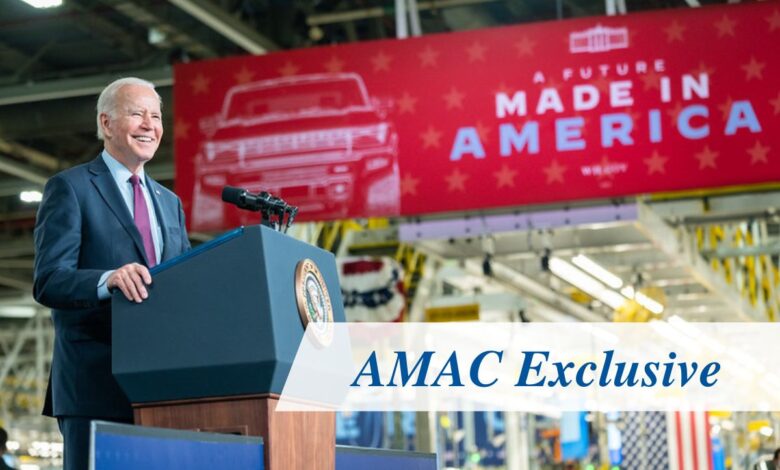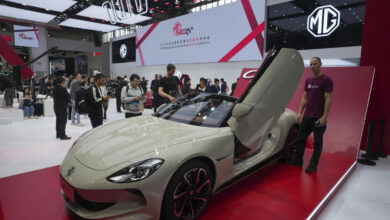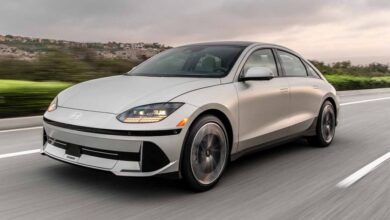EV Mandates Are Killing Affordable Cars

According to data from Cox Automotive, the average cost of a new car in the United States as of May 2024 was $47,433 – well out of the price range of most Americans and up more than $10,000 from just four years ago. One big reason for the jump and the sudden extinction of affordable cars is President Joe Biden’s climate policies and electric vehicle (EV) mandate.
The Biden administration has made it clear that, if it has its way, the future of personal transportation in America will be “electric or bust.” In March of this year, Biden’s Environmental Protection Agency (EPA) finalized regulations that will require two-thirds of all new car sales to be EVs or hybrids by 2032 – just eight years away. In 2023, just eight percent of new car sales were electric, even with generous government subsidies.
As The Wall Street Journal Editorial Board put it shortly after the new rule went into effect, “This is a coerced phase-out of gas-powered cars.” Though the final rule is somewhat less extreme than the original draft rule, the Editorial Board wrote, it is merely a “delay in execution” for the U.S. auto industry.
Additionally, as part of the so-called Inflation Reduction Act (IRA), Congress allocated $7.5 billion for the creation of new EV charging stations. (Notably, despite promising 500,000 charge stations, less than 10 have actually been constructed two years later.) The IRA also extended a $7,500 tax credit for “new clean electric vehicles” in the hope of making the expensive cars more appealing to consumers.
But at about $50,000 on average, EVs are still more expensive than gas cars, and 46 percent of Americans say they have no intention of ever purchasing one.
This has created an impossible situation for automakers. In pursuit of its “green revolution,” the Biden administration has essentially forced car manufacturers to invest all of their time and capital in developing electric vehicles that most Americans either can’t afford or simply don’t want.
As a result, carmakers are taking huge losses on their EV lines. Ford lost $4.7 billion on its EV business in 2023. GM lost $2.5 billion. On average, car companies lost about $6,000 on every EV they sold last year.
In order to offset these losses, manufacturers have been forced to increase prices for traditional gas-powered vehicles – essentially eliminating affordable cars. Just five years ago, consumers could choose from a half dozen new cars under $20,000. There’s now just one: the Mitsubishi Mirage. And it, too, appears headed for the scrapyard.
To put it another way, gas-powered car buyers, who are mostly lower middle- and working-class, are paying more for their vehicles to subsidize the EVs purchased by mostly upper-middle class and wealthy elites.
In an interview with AMAC Newsline, Heritage Foundation senior fellow Diana Furchtgott-Roth, director of the organization’s Center for Energy, Climate, and Environment, explained that Biden administration regulations are likely to drive up the cost of gas-powered cars even further if Biden gets another term in the White House.
One specific policy she pointed to was a proposal for a carbon credit system that would essentially force automakers to pay the government for each gas-powered car they sell. This cost would then be passed on to consumers with higher and higher sticker prices.
Furchtgott-Roth also said that stricter emissions standards have made cars more expensive by forcing manufacturers to develop entirely new engines and engine parts – more costs that consumers end up paying.
Furchtgott-Roth warned that, under a second Biden term, these policies would likely expand. “The EPA has already passed another rule requiring car plants to close by 2040 if they can’t sequester their total carbon output,” she said.
In addition, under the new “Corporate Average Fuel Economy [CAFE] rule, gasoline-powered cars are required to be more efficient, which, in turn, makes them more expensive. The end result is average Americans hold onto old cars longer.” This results in more older, less reliable cars are on the road for longer, meaning “more Americans are going to die on the roads with these standards than the old ones.”
As for the solution, Furchtgott-Roth sees only one: “the remedy is a policy change.” For that, she said, America would need a new president and new EPA leadership willing to change course.
Of course, the persistently high inflation as a result of Biden’s enormous spending packages has also driven up the price of new – and used – cars. But while the cumulative inflation rate from the start of Biden’s presidency through the end of March was 23 percent, new car prices were up 29 percent in that same time period. Used car prices, meanwhile, are up 34 percent.
No matter how the president’s defenders may try to spin it, Biden’s tenure has been a complete disaster for Americans looking to get into a new ride.
Andrew Shirley is a veteran speechwriter and AMAC Newsline columnist. His commentary can be found on X at @AA_Shirley.



